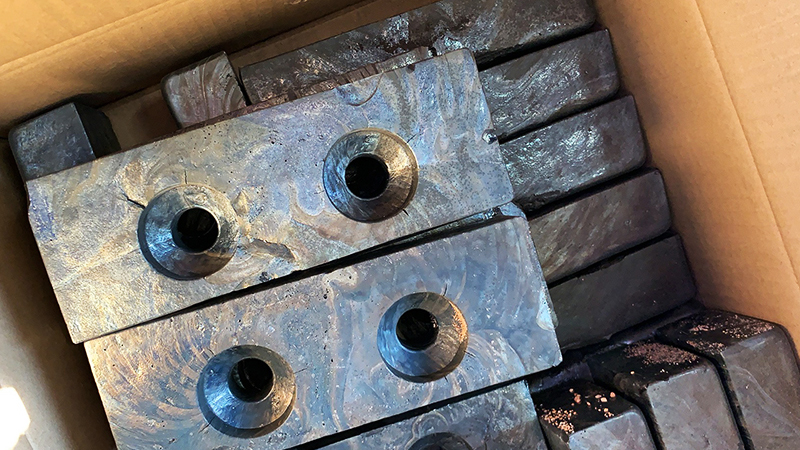Cast basalt slab is a kind of iron and steel product in which flat steel is cross arranged by the cast basalt slab manufacturer according to a certain spacing and cross bars, and the cast basalt slab manufacturer is welded into a square grid in the middle. It is mainly used as ditch cover plate, steel structure platform plate, step plate of steel ladder, etc. the cross bars are generally twisted square steel. Today, let's talk about the influencing factors of welding deformation of steel cast basalt slab.
1. Influence of input heat source on welding deformation: in the welding process of steel grating, affected by local high-temperature heat source, the weld area is heated sharply and melted locally. The material in this area is heated to expand the welding area, and the relatively low temperature area around the cast basalt plate restricts the welding area, resulting in elastic thermal stress and thermal compression. During cooling, the material shrinkage in the weld area is affected by the uneven temperature field in the surrounding area, resulting in uneven shrinkage deformation. The weld area presents tensile residual stress, and the adjacent areas bear compressive residual stress.
2. Influence of weld size on welding deformation: for cast basalt plate welding, the area size of weld is closely related to the bending deformation of steel grating weldment. In addition, the position of weld in the structure will also affect the welding deformation of stainless steel grating. The asymmetric arrangement will lead to the bending deformation of the weldment. The closer the neutral axis of the section of the steel grating weldment is to the weld, the smaller the bending deformation is relatively; On the contrary, the farther the neutral axis of the weldment section is from the weld, the greater the bending deformation is relatively.
3. Effect of initial roughness and thickness of welding plate on welding deformation: however, it is impossible to produce stainless steel plate under ideal conditions in actual processing and production. It may have different degrees of initial flexural deformation or initial geometric defects. These initial surface roughness and defects will cause critical instability deformation of steel grating welding to a certain extent. For the plate with unevenness problem, the increase of residual stress and the increase of plate deflection in the initial stage are relatively slow; However, when the residual stress produced by welding exceeds a certain value, the increase of instantaneous plate deflection will be relatively rapid. When the initial roughness is relatively large, the critical load that the plate can bear will be reduced to a certain extent, and the easier it is to produce instability deformation. Therefore, the initial surface roughness of stainless steel plate weldments should be strictly controlled, otherwise it will greatly affect the welding instability resistance and critical load. In addition to the initial surface roughness, plate thickness is also an important factor for instability deformation. The smaller the thickness of the welding plate, the smaller its stiffness and the lower its ability to resist bending deformation. When stainless steel plate is butt welded, it is more prone to bending deformation under the influence of high-temperature heat source. On the contrary, the greater the welding thickness, the greater the stiffness and less deformation.





![]()